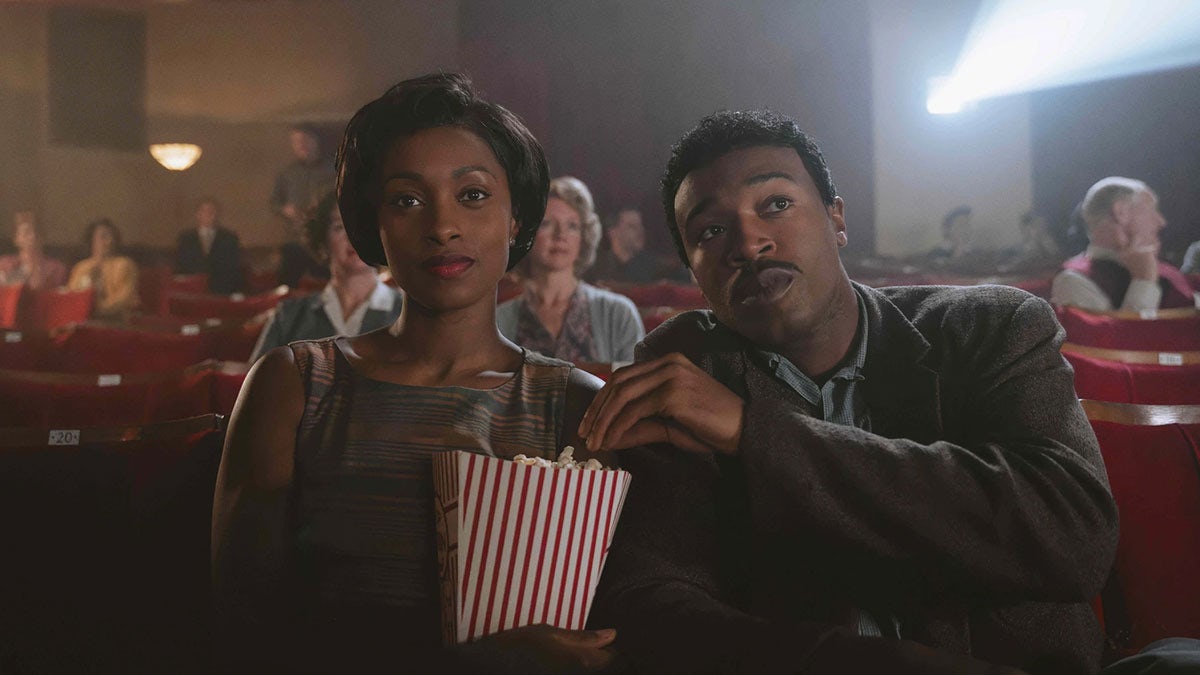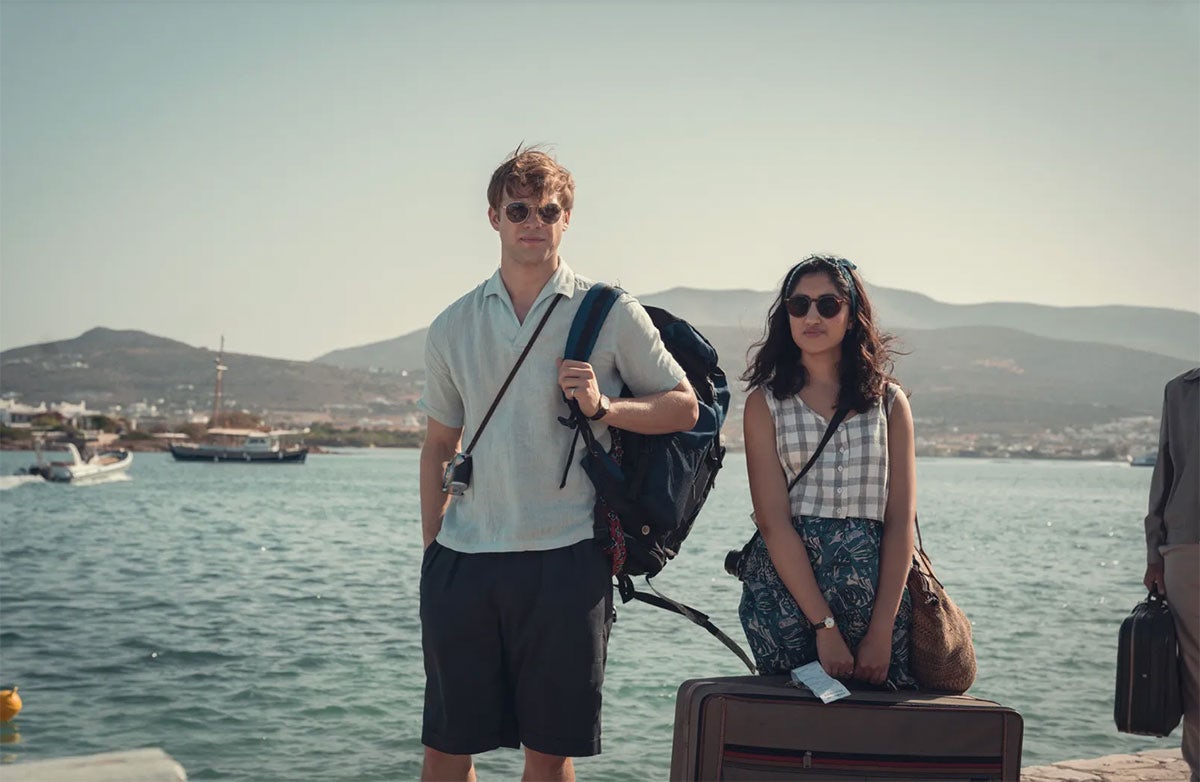How marketing for TV and film has evolved
The rise of social media has led to an uptick in the use of stills photography and video clips to help promote new shows and films. CR examines the impact of this approach
The success of new TV shows and films depends on many things but what can make or break them is the marketing. Whipping up a frenzy before, during and after a release is pivotal in ensuring people will actually sit down and watch. Of course we’re used to press junkets, posters, trailers and some photography. But the increased use of social media in this area has meant the visuals have had to step up.
Stills photography, behind the scenes images, and video clips of emotional scenes and juicy dialogue have become a way of drumming up engagement. “It’s always been an essential part of marketing – especially back when it was the only visual companion along with a trailer to market,” says unit stills photographer Matt Towers.
“But with everyone having millions of devices there’s been a resurgence. A still image can be used to accompany so many things from posters to book covers and coffee table reads of the BTS. Social media has increased everyone’s appetite of peeling back the curtain and accessing that movie magic. We live in a visual world.”

Towers, previously a quantity surveyor with a hobby, got into this area of photography after seeing a shoot during the filming of a TV production when he was travelling. He got hooked on the idea of being among the action on set and capturing the essence of these shows, and spent the next few years trying to break into the industry. These days he’s working freelance for the likes of Netflix, BBC, ITVX and Paramount+ for productions including Bodies, One Day, The Gentleman, and Sexy Beast.
“My main responsibility is to market the film or TV show and help put bums on seats – entice the viewer with imagery that can sell the show while capturing everything that goes along with the filming side,” he explains. Ideally projects start with a brief, though this isn’t guaranteed so the client relies on Towers’ experience and skill to get what’s needed.

“I always try to match what the DOP and director are going for – that means shooting style and also the grading,” he says of his approach. “I will speak to the cinematographer to get a feeling for what’s going on as well as read the scripts when they come in. Once that’s covered I will always try to shoot what I like with my choice of coverage and aesthetic.”
What makes Towers’ images more engaging is that around 70% of his work is shot during a take so he’s able to capture the actors’ performance there and then. “Although I’m adapting to the aesthetic of the project I’m capturing what works for me, through my lens. I’m then taking on set portraits where I can direct the actor in specific poses in the environment their characters are placed. Behind the scenes has now become a huge part of my job and I’m very thankful for it as it allows us to shoot more in a photo journalistic/documentary way, there is huge freedom.”
Behind the scenes has now become a huge part of my job – it allows us to shoot more in a photo journalistic/documentary way, there is huge freedom
The challenges for photographers like Towers is all in the timing and sharing a space with other creatives. “Part of the skill of a unit photographer is capturing what they need without getting in the way of what is being filmed or distracting the cast and crew. There may be times that they need to step in to make a photo happen but choosing when to ask for that is really important,” says Debi Berry, global creative producer at BBC Studios.
“It’s also important that if the image is meant to be an actor in character that you are staying true to how they would look and behave, so even if they are posing for photography away from filming they are channelling their character in that image too.”
View this post on Instagram
This work differs from the usual promotional assets in that these images reflect the look and feel overall in contrast to press images which are often created in a studio and more posed. “We’ll ask our photographers to capture a range of shots, close up, wider action shots, strong emotional moments, imagery that helps to sell the show and engage viewers,” explains Berry. “Behind the scenes shots are looser and give the photographer more freedom. As well as using these shots to celebrate the craft that goes into producing the programme, it’s also great to capture the fun and intimacy among the cast and crew, especially for use on social media.”
This sense of intimacy and familiarity is something BBC Studios and other networks and streaming platforms also aim to emulate through the video clips they showcase on their social channels. “While trailers can be shaped into all sorts of different forms to create a specific feeling that we want to convey to audiences, clips are directly lifted from a show, and are therefore giving a very real and authentic window into the programme,” explains Luke Spillane, digital lead for Doctor Who at BBC Studios.
“With Doctor Who, a show that is darting around time and space, we have varying different destinations and time periods in every episode – so a clip can give audiences a real flavour of where we will be that week and set the tone and unique appeal of that story.”

The beauty of selecting these clips, whether it’s for a series or film, is that you can pinpoint specific emotions like comedy or heartbreak, or hone in on a particularly action-based sequence. “If you pick the right moment it will be something that stops audiences scrolling and makes them really feel something, which in turn makes them want to talk about the show,” says Spillane. “When choosing clips for social, we weigh up what is going to make audiences comment more – how excited they are, what their theories are, but most importantly, what will make them share the content with others?”
For BBC Studios it’s about creating a “shareable moment”, but it’s also finding the right mix of clips and photography to be shared after a programme or film has been released. “Our top performing videos on the Doctor Who YouTube channel have always been clips, even over trailers or original content,” notes Spillane. “Clips continue to find new audiences, and more so when they’re clips that resonate outside fandom.”
Of course the risk of this approach is that if you sample the best, most entertaining parts of a show or film, audiences could be underwhelmed during the actual watching. Or worse, plot points and unexpected twists are given away and ultimately ruin the experience. So it’s a fine balance, and also about ensuring these elements sit comfortably alongside the content itself and other promotional material.
View this post on Instagram
This was demonstrated in Amazon Prime’s hit film Saltburn earlier this year. While it became known for a few notoriously graphic scenes, if these were revealed on social the film would be spoiled so instead Amazon released more mysterious clips and intriguing teasers and sequences, as well as yearning edits of actor-of-the-moment Jacob Elordi’s character Felix (echoing the longing POV of protagonist Oliver) that played into the overall tone of the film.
Equally, more lighthearted and comedic exchanges were pulled out, all amplified by the noughties soundtrack, which trended heavily on platforms like Instagram and TikTok. The same treatment has been applied to other hit films from the streamer such as romcoms The Idea of You and Anyone But You.
View this post on Instagram
Similarly, with Netflix’s One Day, heart-warming moments between will-they-won’t-they-couple Dexter and Emma played out on social repeatedly, even weeks after launch when the ending had no doubt been discovered by the audience. Towers believes what helps amplify this and lengthens the shelf life of these clips is the dedicated fan accounts whose character edits or best moment compilations are now more shareable than ever.
“[These accounts] share and repost images to spread the word as well as turning the images into memes,” he notes. “My recent work for One Day had around one million impressions on Instagram, for example, as people were using the work to create other forms of media including paintings and scrapbooks.”
The increased use of visuals still stands alongside the usual modes of marketing TV and film, but where this approach succeeds is by creating deeper connections with audiences and almost giving them the material to play with themselves. The power in this is something studios and networks are clearly seeing the benefits of.
View this post on Instagram
“The number of days on set have increased to account for the publicity a show or film will get. We tend to shoot between 800-1,000 images a day and cull that down to around 200-400 so it gives the marketing department as many options as possible,” notes Towers. “But again the work really goes back to getting five or six super strong images that sell the show.”
It also demonstrates the role social media has to play. People talk about the shows and films they watch on these platforms, so it makes sense that the marketing should also take place in the same space. “In a world where many people find their shows by seeing something on Instagram or TikTok, photography has become more and more important as a way of grabbing a viewer’s attention and keeping them interested,” reflects Berry.




